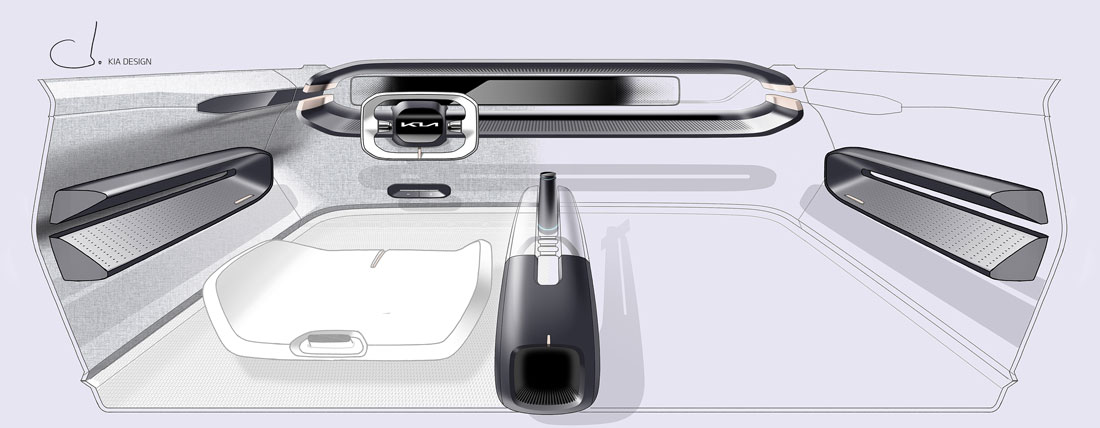Playing with contrasts, constantly innovating, moving at the speed of a startup. Above all, not being afraid to take risks. Kia design has taken a non-conformist approach with its Opposite United philosophy, of which the EV9, a seven-seater electric SUV, is an expression. To take a preview and delve into its contents, we went to Seoul, and it is precisely the megacity of over twenty million people, with its vibrant spirit, that is the key to understanding the avant-garde culture that permeates the Korean brand.
Embrace contrasts
“We want to embrace contrasts because they are part of everyday life”, explains Karim Habib, Executive Vice President and Head of Kia Global Design Center. “It happens all over the world, but particularly in Seoul, where old and new, tradition and high technology coexist. Many trends are redeveloped here through the meeting of different cultures and then exported elsewhere”. South Korea has an increasingly strong impact on contemporary life. The “K-way” trend movement extends from fashion to architecture and from art to music with K-pop: “Perhaps it’s not yet perceived in the automotive segment, but we want to be part of this avant-garde. These are cultural aspects that we integrate into the creative process so that also customers perceive them in the end product”.
The ”white space” concept
The decidedly avant-garde design is also reflected in the passenger compartment, a large living space where technology is very present but never dominant, so much so that the designers speak of “shy-tech” rather than hi-tech. Jochen Paesen, Head of Interior & CMF explains: “The interior is based on the concept of ‘white space’ or negative space. An element surrounded by emptiness stands out much more strongly. We first designed a rather monolithic, solid object, gradually excavating to bring out the individual components with clarity and elegance, from the screen to the centre console to the handles on the door panels”.
Sustainable materials
The choice of materials is also unconventional. It is devoted to sustainability, but it is not limited to no longer using leather upholstery: “We have identified areas where we can make significant changes. For EV9 we speak of the Ten Must-Have Items, from using foams made from natural oils, to parts with recycled and unpainted plastics. We will follow them in our future models”, promises Paesen. And Karim Habib confirms: “It’s just the beginning, we will do increasingly more”.
The ”white space” concept
The decidedly avant-garde design is also reflected in the passenger compartment, a large living space where technology is very present but never dominant, so much so that the designers speak of “shy-tech” rather than hi-tech. Jochen Paesen, Head of Interior & CMF explains: “The interior is based on the concept of ‘white space’ or negative space. An element surrounded by emptiness stands out much more strongly. We first designed a rather monolithic, solid object, gradually excavating to bring out the individual components with clarity and elegance, from the screen to the centre console to the handles on the door panels”.
Sustainable materials
The choice of materials is also unconventional. It is devoted to sustainability, but it is not limited to no longer using leather upholstery: “We have identified areas where we can make significant changes. For EV9 we speak of the Ten Must-Have Items, from using foams made from natural oils, to parts with recycled and unpainted plastics. We will follow them in our future models”, promises Paesen. And Karim Habib confirms: “It’s just the beginning, we will do increasingly more”.
(Full article in A&D no. 260)
















